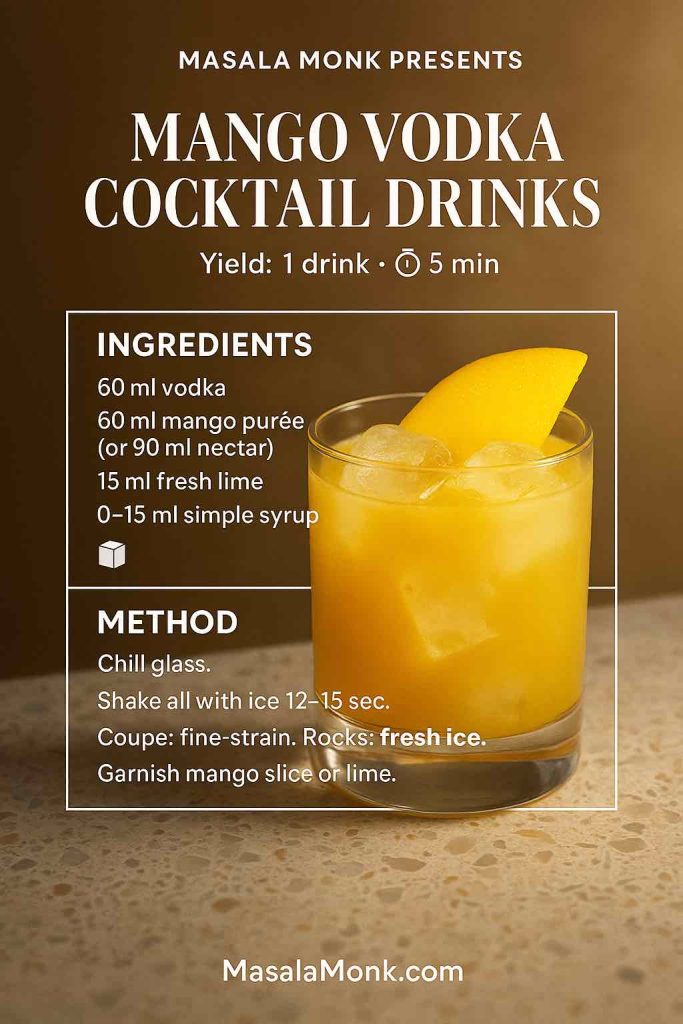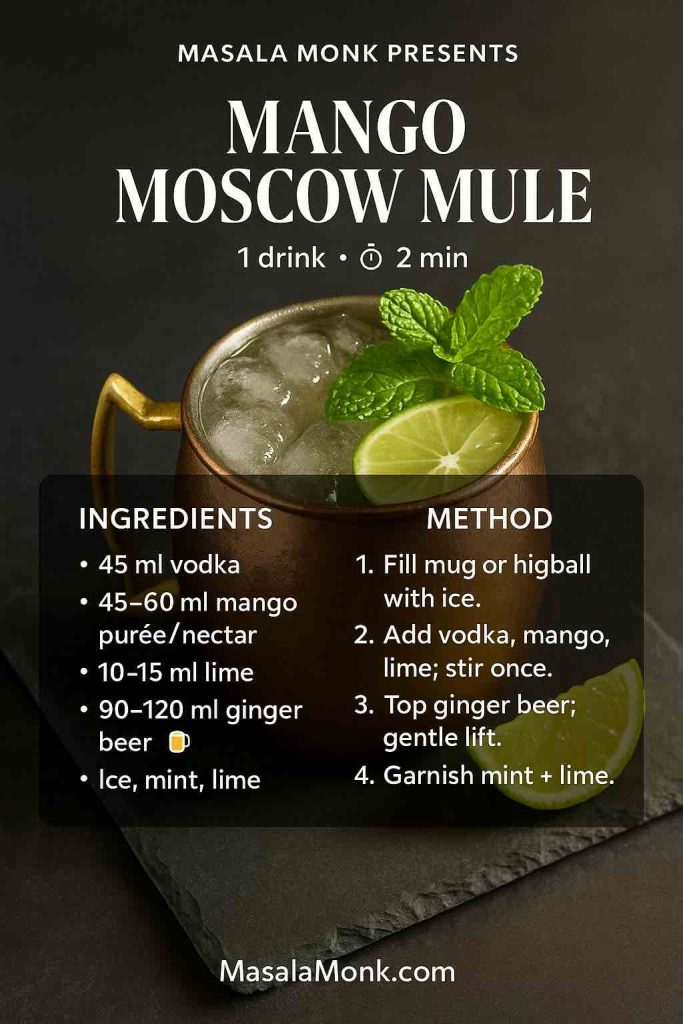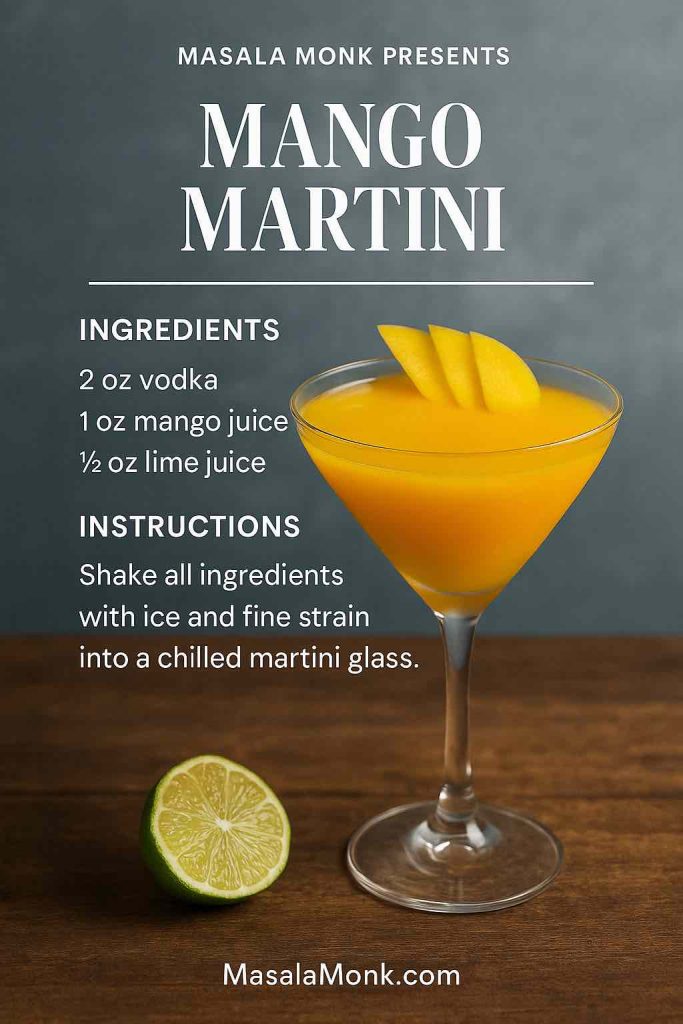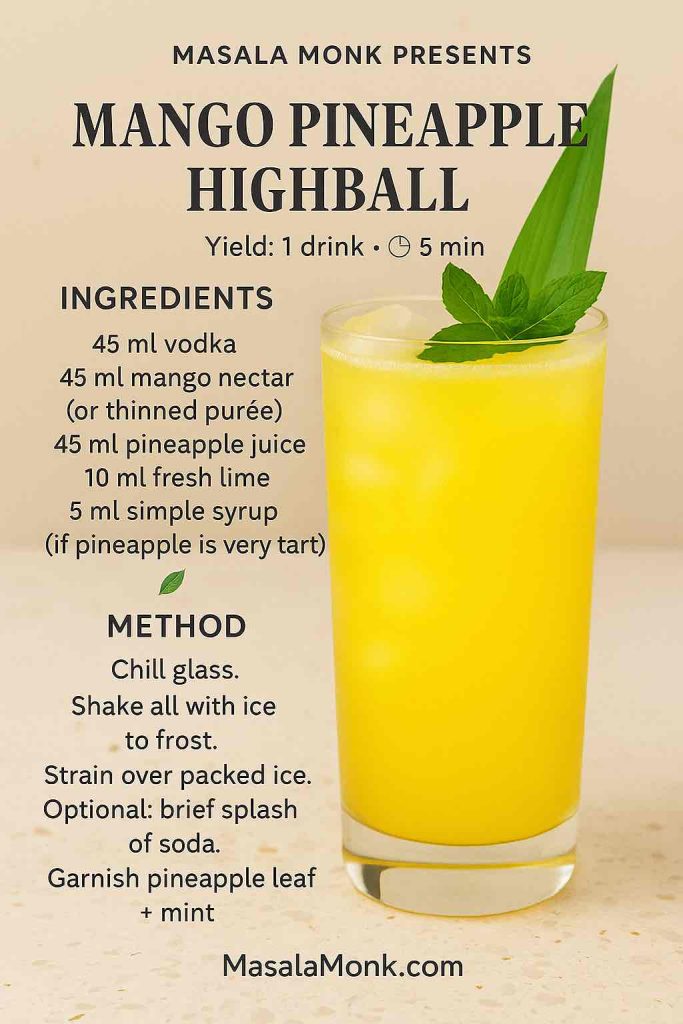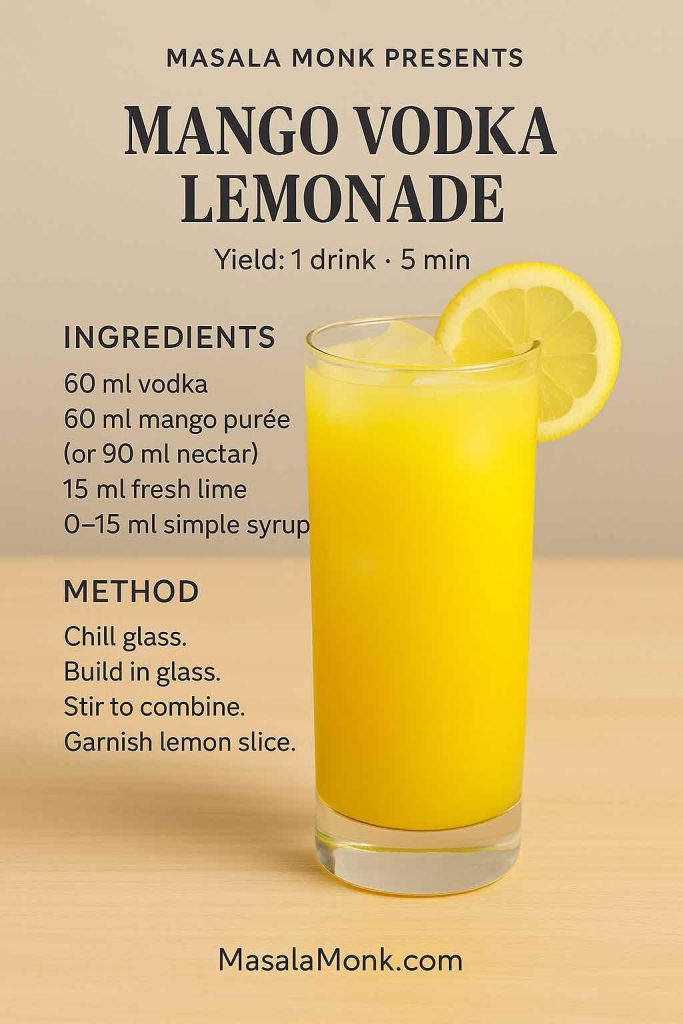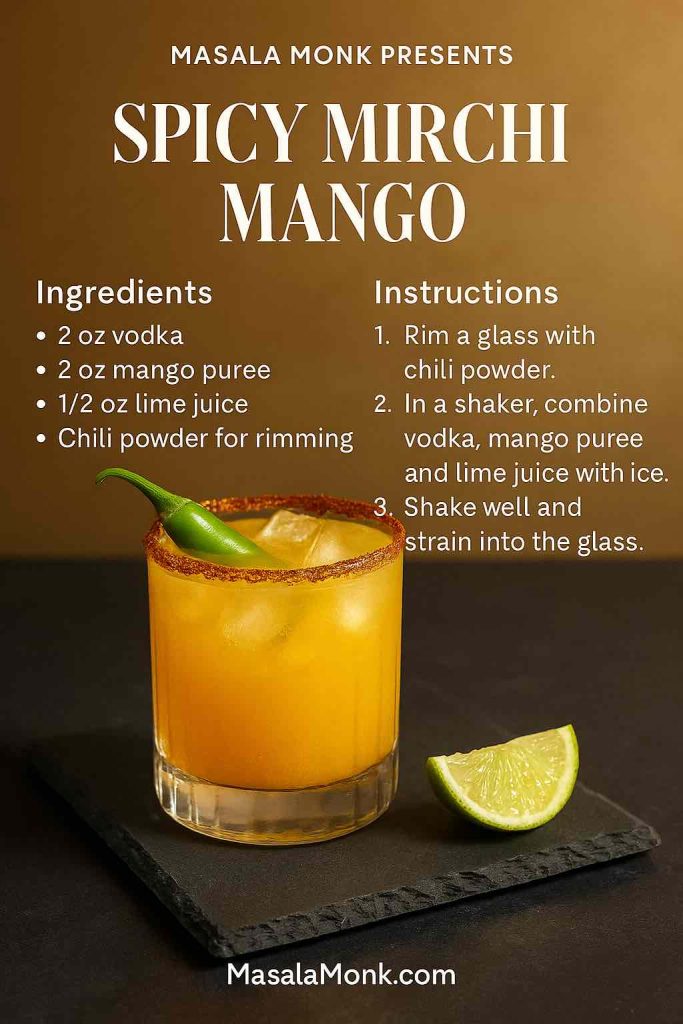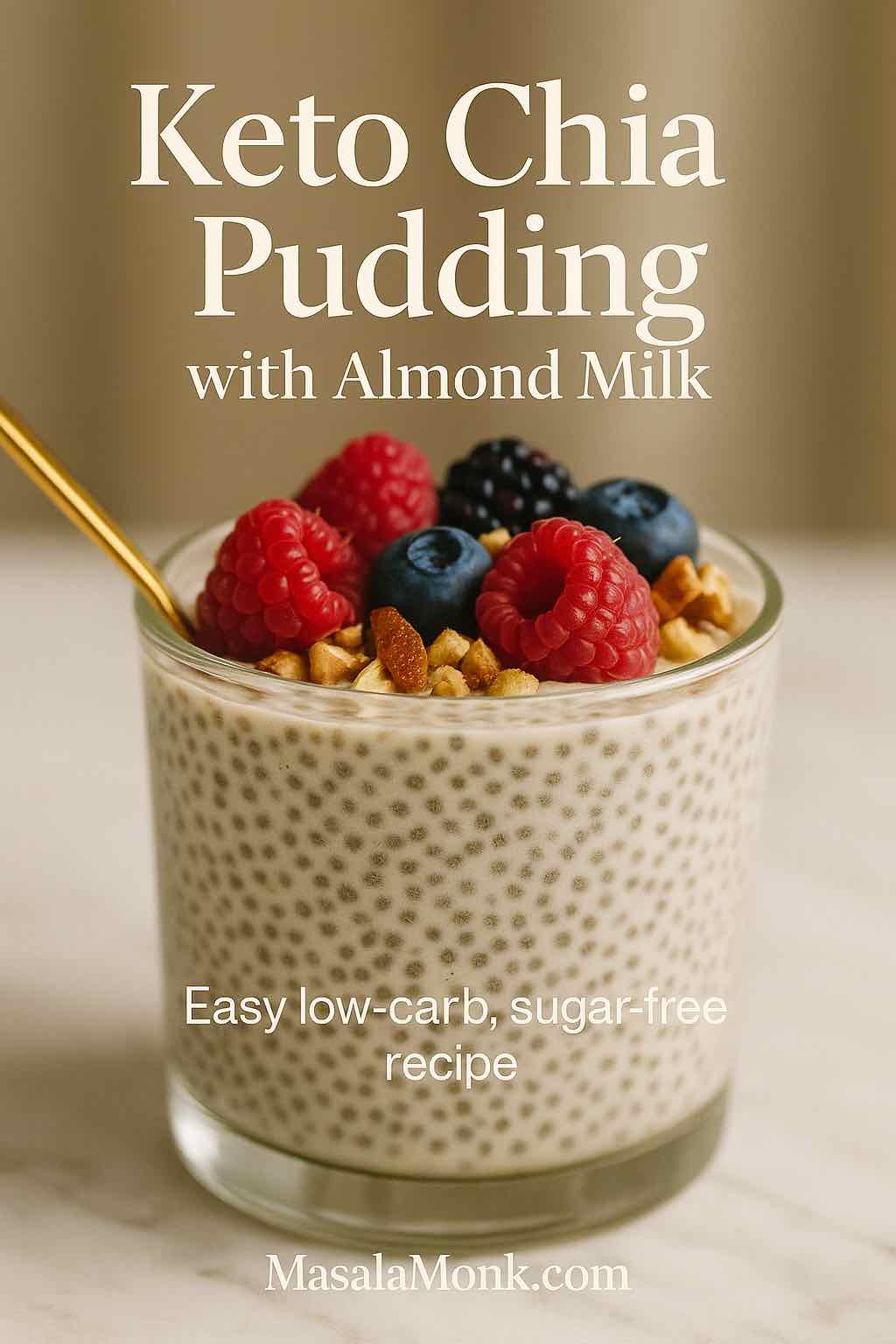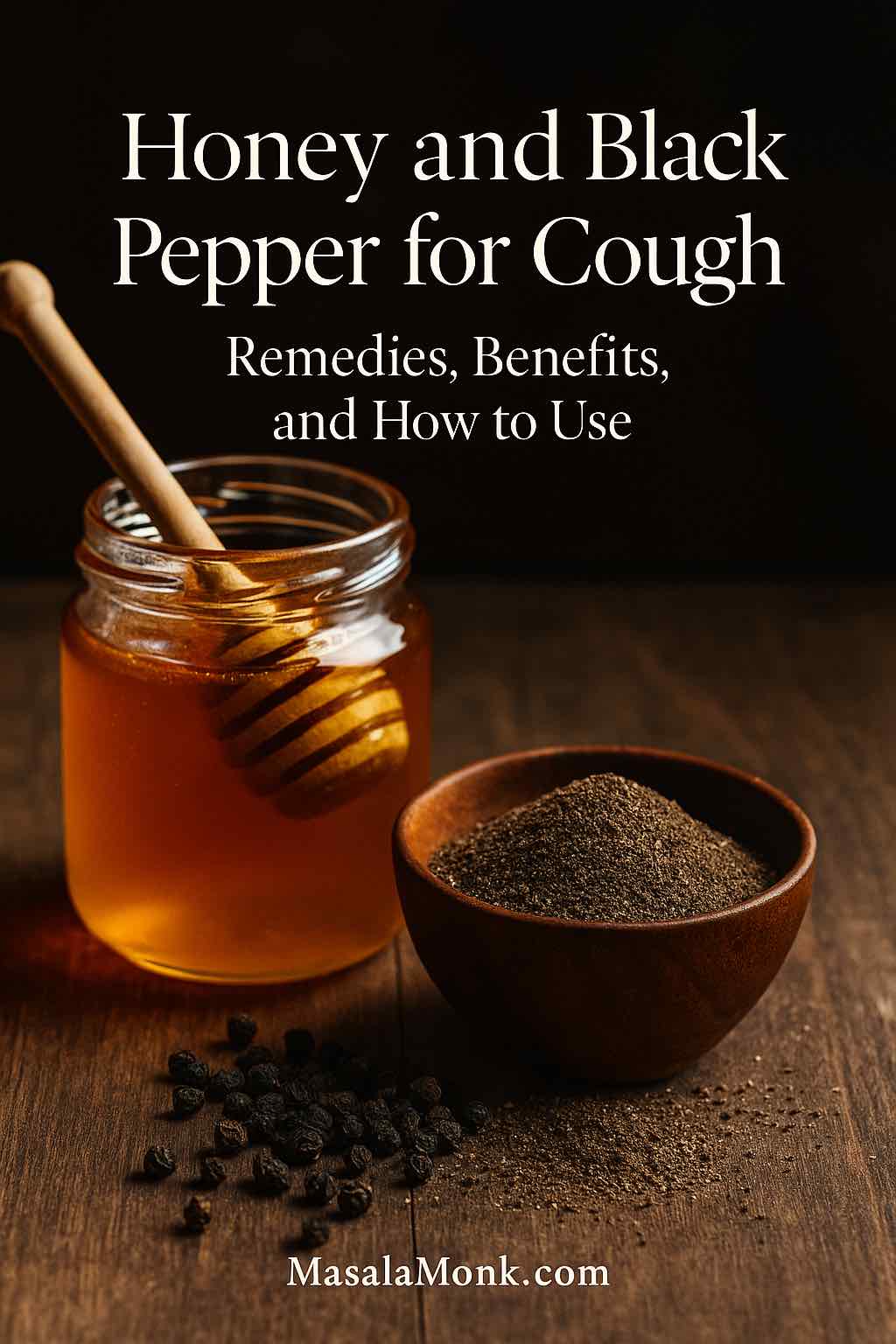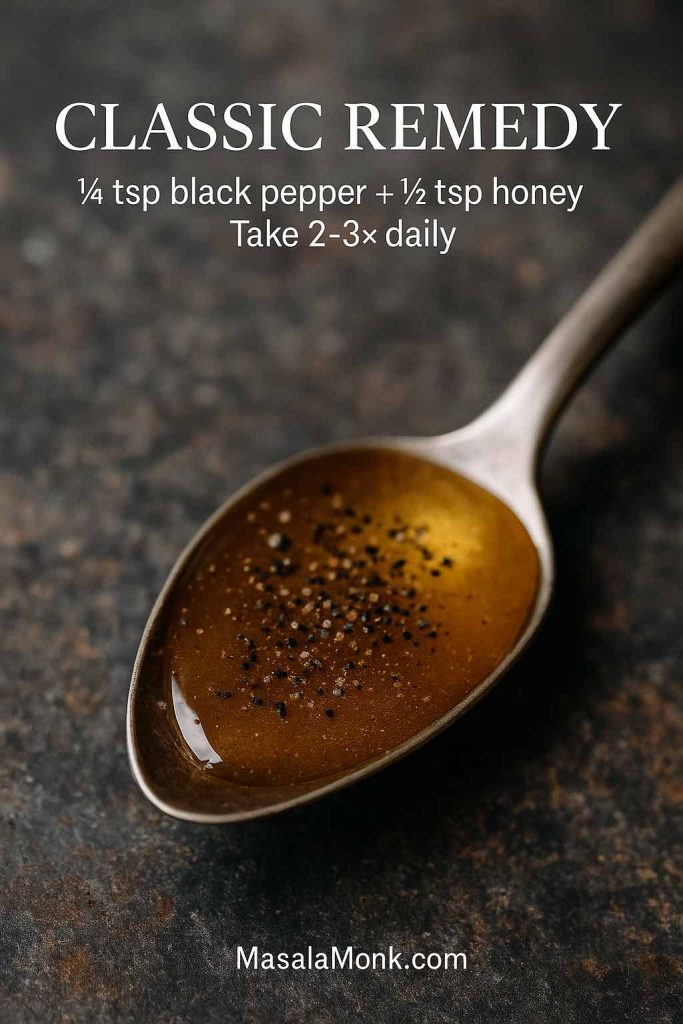
There’s a reason punch with pineapple juice keeps showing up at weddings, showers, and backyard cookouts: it tastes like pure sunshine, it’s budget-friendly, and it can scale from a cozy ten-person brunch to a fifty-guest celebration without breaking a sweat. Pineapple juice also plays beautifully with bubbles (ginger ale or Sprite), brightens up tart fruits like cranberry, and makes a tropical base for grown-up versions with rum or vodka.
Craving more tropical blends? Try our pineapple mango juice guide.
In this guide, you’ll find everything you need to nail the balance—sweetness, acidity, fizz—and then nine crowd-tested recipes that line up with what guests actually request: ginger-ale wedding punch, cranberry holiday punch, Sprite lemon-lime fizz, sherbet floats, lemonade blends, Malibu rum, a classic Planter’s-style take, blue curaçao for pool parties, and a clean vodka version. Each recipe includes cups and metric, smart make-ahead steps, and scale-up tips.
As you read, keep this simple truth in mind: the secret to unforgettable punch isn’t a fancy ingredient. It’s temperature (everything cold), timing (add fizzy stuff right at the end), and a little balance (citrus and salt to keep sweetness in check).
The Pineapple Punch Playbook (Read This Before You Mix)
Before we dive into the recipes, let’s set you up to win. Understanding a few fundamentals will make any punch with pineapple juice taste intentional rather than improvised.
1) Start cold and stay cold
Chill all the non-carbonated ingredients for at least 4 hours (or overnight). Keep one batch in the bowl and a second pre-chilled batch in the fridge so refills don’t warm the party bowl. Use frozen fruit—pineapple rings, grapes, cranberries—as “ice” that doesn’t water things down.
2) Add bubbles at the last moment
Ginger ale, lemon-lime soda, club soda, and sparkling water lose fizz fast in a warm room. Stir them in gently right before serving.
3) Balance sweetness and acidity
Canned pineapple juice is fairly sweet. A squeeze of lemon or lime wakes everything up. If you over-sweeten, don’t panic—add citrus, a splash of club soda, and (this sounds odd, but works) a tiny pinch of salt. Salt suppresses bitterness and makes fruit pop. Cutting sugar? These low-carb mocktail tips show how to keep fizz without heaviness.
4) Choose your pineapple juice
Fresh-pressed is bright and variable; canned or shelf-stable is consistent and convenient. For large events, consistency wins. For small gatherings, fresh can be magical—just taste and adjust.
5) Ginger ale vs ginger beer
Ginger ale is sweeter and typically non-alcoholic; ginger beer is spicier and sometimes low-ABV—see ginger ale vs. ginger beer differences and a second take here. Use ale for classic wedding punch, beer when you want a peppery kick.
6) Garnish with intention
Citrus wheels, pineapple spears, mint sprigs, and cranberries do more than decorate—they infuse aroma and make the bowl photo-ready. If you want to go extra, freeze a ring mold with pineapple juice and citrus slices to create a slow-melt ice ring.
(If you serve alcohol, read the NIAAA standard drink guide; and for food-safe handling, see FoodSafety.gov basics.)
How Much Punch with Pineapple Juice Should I Make?
Because punch sits out and people refill, planning by the glass is safer than planning by the bottle. A practical rule:
- When punch is one of several drinks: plan 3–4 liters per 10 guests.
- When punch is the star: plan ~1 gallon (3.8 L) per 10 guests for a 2–3 hour event.
- Kids + hot weather: add a 10–15% buffer.
Scaling is simple: most of the recipes below make ~2.6–3.2 L (10–14 servings). For 30 guests where punch is one of a few options, triple any base recipe and you’re set. For 50–60 guests, either 4× a recipe or run two different bowls (one zero-proof, one adult).
Plan by liters per guest, not bottles.
- One of several drinks: 3–4 L per 10 guests (2–3 hr event)
- Punch is the star: ~3.8 L per 10 guests
- Kids or hot weather: add 10–15%

Fast Planner (assumes ~2.8 L per base batch)
| Guests | If punch is one of several: Total L (range) | Batches (~2.8 L ea.) | If punch is the star: Total L | Batches |
|---|---|---|---|---|
| 10 | 3–4 L | 2 | 3.8 L | 2 |
| 20 | 6–8 L | 3 | 7.6 L | 3 |
| 30 | 9–12 L | 4–5 | 11.4 L | 5 |
| 40 | 12–16 L | 5–6 | 15.2 L | 6 |
| 50 | 15–20 L | 6–8 | 19.0 L | 7 |
| 60 | 18–24 L | 7–9 | 22.8 L | 9 |
For 30 guests with other drink options: triple any ~3 L base recipe. For 50–60 guests: 4× one recipe or run two bowls (zero-proof + spiked).
1) Pineapple Punch with Ginger Ale (Wedding Classic)
Light, effervescent, and universally loved—this is the punch with pineapple juice people expect at showers and weddings.
You’ll need (≈2.8 L / ~12 servings)
- 4 cups (950 ml) pineapple juice
- 2 cups (480 ml) orange juice (or 300 ml thawed OJ concentrate + 240 ml cold water)
- 4 cups (950 ml) ginger ale, well chilled
- Ice, orange slices, pineapple chunks

Method
In a chilled bowl, stir pineapple and orange juices. Right before guests arrive, gently pour in ginger ale. Add ice and fruit.
Flavor notes & swaps
- Brighter & less sweet: replace orange juice with lemonade.
- Spicier: swap half the ginger ale for ginger beer.
- Lower sugar: use diet ginger ale or plain club soda for half the bubbles.
Scale up
For ~36 servings, multiply everything by 3. Keep a second chilled batch ready in the fridge; add ginger ale on demand.
Serve it pretty
Rim some glasses with fine sugar and garnish with a thin orange wheel and a mint sprig.
Do not forget to explore Mango Vodka Cocktail: The Perfect Base + 7 Must-Try Variations.
2) Cranberry Pineapple Punch (with Ginger Ale)
Ruby-red and refreshing, this leans festive but works year-round—especially with lime.
You’ll need (≈2.7 L / ~12 servings)
- 3 cups (710 ml) pineapple juice
- 3 cups (710 ml) cranberry juice (100% or cocktail)
- 4 cups (950 ml) ginger ale, chilled
- 2–3 limes, thinly sliced; 1 cup cranberries (fresh or frozen)
- Ice
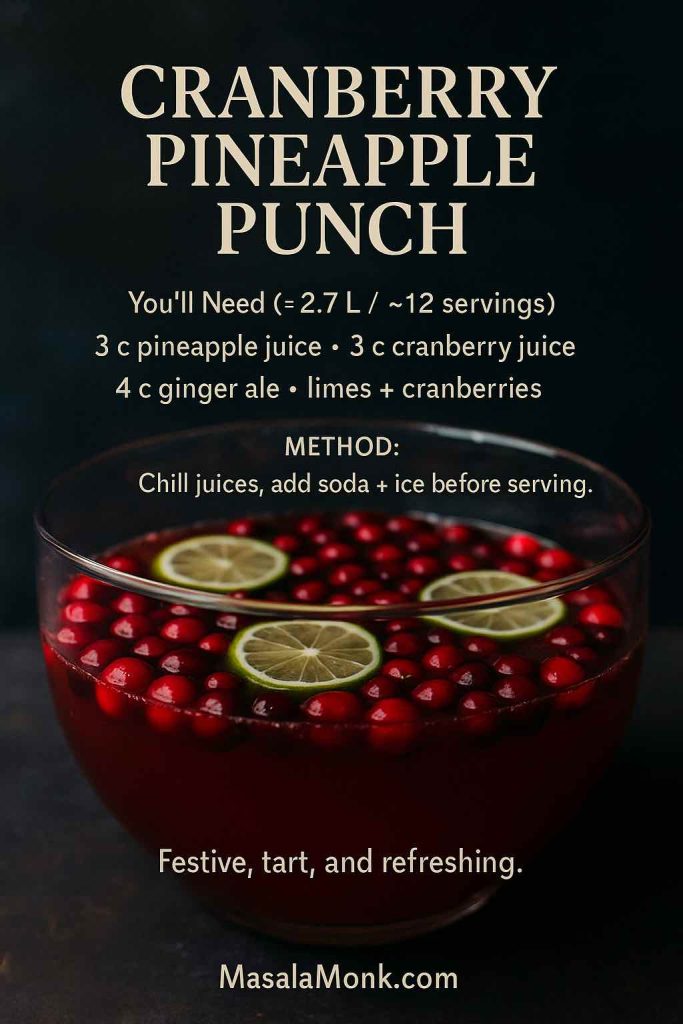
Method
Combine pineapple and cranberry juices with lime slices and cranberries. Chill well. Add ginger ale at the last minute and then ice. For non-alcoholic riffs, that might be good for digestion as well – browse our cranberry mocktail ideas.
Flavor notes & swaps
- Tart lovers: add ½ cup (120 ml) pomegranate juice.
- Holiday spice: drop in cinnamon sticks and whole cloves; remove before serving.
- Pink sparkle: replace half the ginger ale with sparkling rosé for an adults-only version.
Scale up
For ~50 servings, multiply by 4. Swap half the ice for frozen cranberries to prevent dilution.
3) Pineapple Punch with Sprite (Lemon-Lime Fizz)
Crisp, citrusy, and made for afternoon gatherings.
You’ll need (≈2.8 L / ~12 servings)
- 4 cups (950 ml) pineapple juice
- 2 cups (480 ml) lemonade (or 180 ml frozen lemonade concentrate + 480 ml cold water)
- 4 cups (950 ml) lemon-lime soda (Sprite/7UP), very cold
- Lemon wheels; pineapple spears; ice

Method
Stir pineapple juice and lemonade in a chilled bowl. Right before serving, add lemon-lime soda and then ice and garnishes.
Flavor notes & swaps
- Citrus burst: add 2 tbsp lemon zest to the base, then strain before adding soda.
- Herbal twist: muddle a handful of fresh basil or mint with a little lemonade, then stir through the base and strain.
- Not-too-sweet: replace 1–2 cups of soda with club soda.
Scale up
For a kid-heavy party, double it and serve with paper umbrellas—guaranteed smiles.
You might also enjoy reading What to Mix with Jim Beam: Best Mixers & Easy Cocktails
4) Pineapple Lemonade Punch
Bright and snappy with a choose-your-own-fizz ending.
You’ll need (≈2.6 L / ~12 servings)
- 4 cups (950 ml) pineapple juice
- 3 cups (710 ml) lemonade
- 2 cups (480 ml) club soda (lighter) or ginger ale (sweeter)
- Mint, lemon & pineapple slices; ice

Method
Mix pineapple juice and lemonade; chill thoroughly. Add club soda (or ginger ale) at serving. Toss in herbs and fruit.
Flavor notes & swaps
- Sparkling lemonade vibe: use all club soda and add a teaspoon of vanilla extract to round the citrus.
- Grown-up twist: a splash (¼ cup / 60 ml) of Aperol turns it sunset-orange (adults only).
Scale up
For ~36 servings, triple the base and keep the club soda unopened until showtime.
Also Read: Pineapple Juice for High Blood Pressure: 5 Important Insights 🌟
5) Pineapple Sherbet Punch
Retro in the best way—this is the one everyone photographs first.
You’ll need (≈3.2 L / ~14 servings)
- 4 cups (950 ml) pineapple juice
- 6 cups (1.4 L) ginger ale or lemon-lime soda, very cold
- 1 quart (950 ml) pineapple sherbet
- (Optional) 1 quart (950 ml) vanilla ice cream for a creamsicle vibe
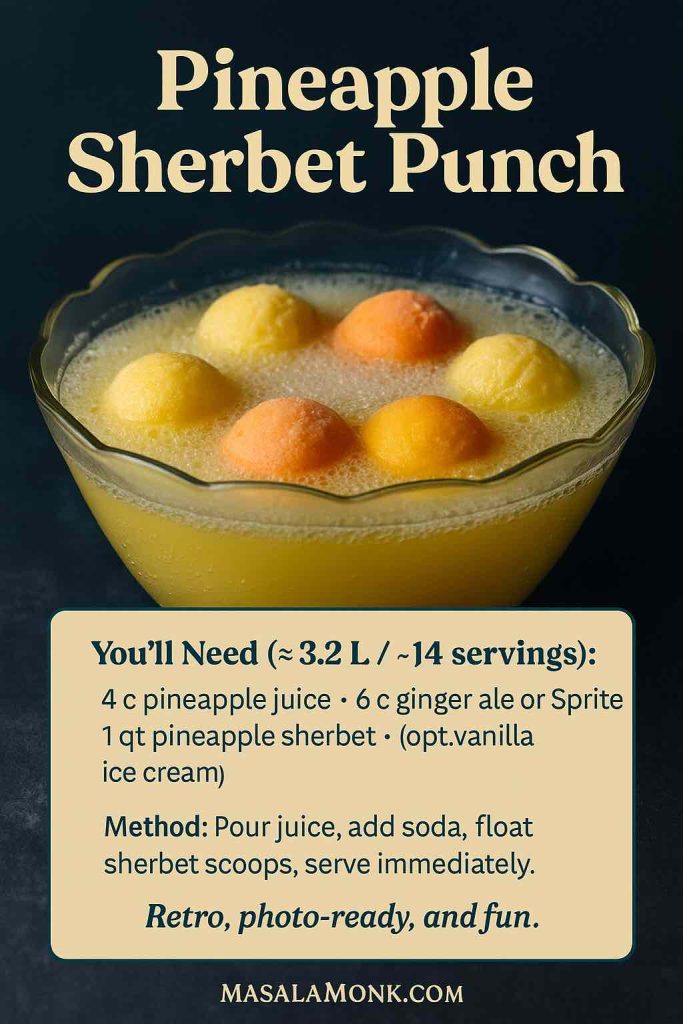
Method
Pour pineapple juice into the bowl. Add soda gently. Float scoops of sherbet (and vanilla ice cream if using). Serve immediately.
Flavor notes & swaps
- Citrus rainbow: use orange sherbet or mix half orange, half pineapple.
- Dessert punch: drizzle a little coconut cream across the top and garnish with toasted coconut flakes.
Pro tip
Pre-scoop sherbet onto a tray and freeze 30 minutes so scoops hold their shape.
While still on pineapples, do read: Pineapple: The Tropical Treasure for Your Skin – Benefits, Myths, and 5 Invigorating Recipes for a Smooth Complexion.
6) Pineapple Rum Punch (Malibu)
Tropical, creamy coconut notes, and dangerously sippable. Label clearly as adults only.
You’ll need (≈2.7 L / ~12 servings)
- 3 cups (710 ml) pineapple juice
- 1 cup (240 ml) coconut rum (Malibu)
- 4 cups (950 ml) ginger ale or lemon-lime soda
- Pineapple wedges; ice

Method
In a pitcher, combine pineapple juice and coconut rum. Chill very well. Just before serving, add soda, then ice and garnish.
Flavor notes & swaps
- More depth: add ½ cup (120 ml) dark rum.
- Creamy piña feel: stir in ¼ cup (60 ml) coconut cream (shake can first).
- Spicy island: a few dashes of Angostura bitters on top.
Scale up
For ~48 servings, quadruple the base. Keep the rum/juice mix in the fridge; add soda in the bowl.
Suggested read: How to Make Pineapple Chia Pudding: A Refreshing Low-Carb Breakfast Option
7) Planter’s-Style Pineapple Rum Punch (Classic Vibes)
A nod to the old rum formula—sour, sweet, strong, weak—with pineapple taking the “weak” role.
You’ll need (≈2.4 L / ~10 servings)
- 1 cup (240 ml) fresh lime juice (sour)
- 2 cups (480 ml) simple syrup (sweet) (adjust to taste)
- 3 cups (710 ml) dark or gold rum (strong)
- 4 cups (950 ml) pineapple juice (weak)
- 1–2 cups (240–480 ml) cold water or soda, to taste
- 6 dashes Angostura bitters; fresh-grated nutmeg

Method
Stir lime juice, syrup, rum, pineapple juice, and water/soda in a chilled bowl. Add bitters. Taste for balance—tweak with syrup or lime as needed. Serve over ice and finish with a whisper of nutmeg.
Flavor notes & swaps
- Tiki lean: add ½ cup (120 ml) orange juice and a bar-spoon of grenadine for color.
- Citrus-forward: replace some water with club soda for lift.
You might also enjoy Natural Detoxification: Cranberry Juice and Apple Cider Vinegar for Weight Loss
8) Blue Pineapple Punch
Pool-party color, grown-up flavor. It looks like vacation in a glass.
You’ll need (≈2.8 L / ~12 servings)
- 4 cups (950 ml) pineapple juice
- 2 cups (480 ml) lemonade
- 1 cup (240 ml) blue curaçao
- 3 cups (710 ml) lemon-lime soda, cold
- Cherries + pineapple chunks; ice
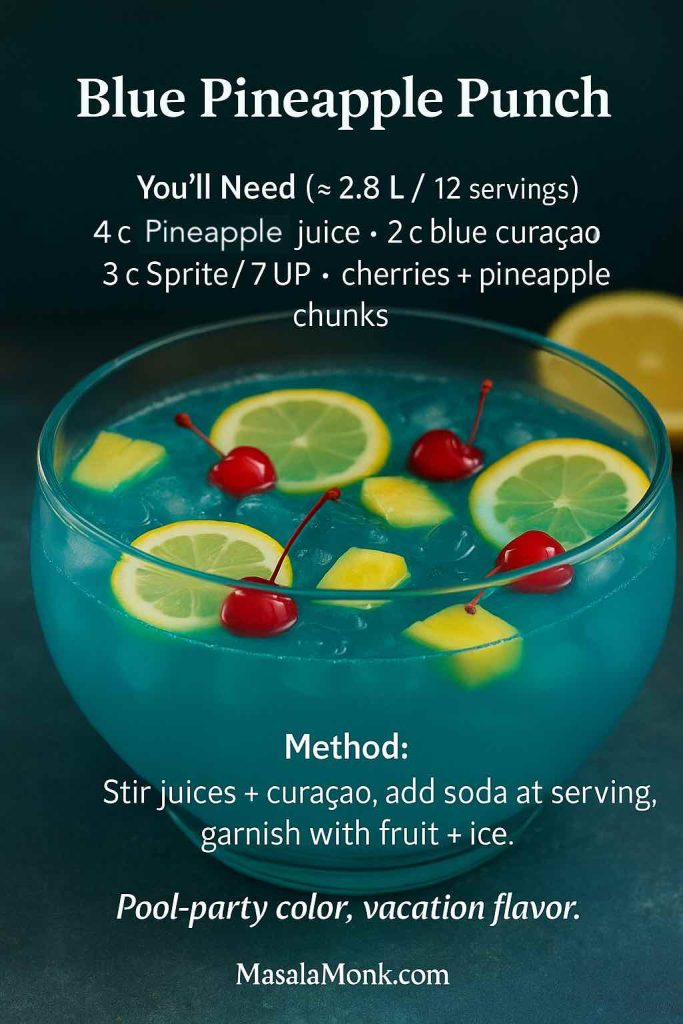
Method
Stir pineapple juice, lemonade, and blue curaçao in a chilled pitcher. Add soda at serving. Ice and garnish.
Zero-proof look-alike
Swap curaçao for a blue sports drink and add a few dashes of orange extract.
9) Pineapple Vodka Punch
Clean, citrusy backbone with just enough fizz to feel festive.
You’ll need (≈2.7 L / ~12 servings)
- 3 cups (710 ml) pineapple juice
- 1½ cups (360 ml) vodka
- 3 cups (710 ml) ginger ale (sweeter) or club soda (lighter)
- 1 cup (240 ml) orange juice
- Ice + orange wheels

Method
Stir pineapple juice, vodka, and orange juice; chill thoroughly. Add ginger ale or club soda at serving. Ice and garnish.
Flavor notes & swaps
- Herbal lift: a handful of mint lightly muddled with OJ (strain before mixing).
- Citrus pop: 2 tbsp lime juice right before serving wakes up the vodka.
And for those mornings after party Top 12 Hangover Remedies from Around the World.
Make-Ahead, Storage & Safety—The Practical Stuff
- Make-ahead window: Mix all non-carbonated ingredients up to 24 hours in advance. Store in the coldest part of your fridge in a sealed container.
- When to add fizz: Always at serving. If your event runs long, keep the soda chilled and top up every 20–30 minutes.
- Keeping it cold: Use frozen fruit, an ice ring, or small ice cubes added in stages. For outdoor service, keep a spare pitcher in a cooler and rotate refills.
- If you over-dilute: Re-balance with a quarter-strength concentrate of the base (e.g., a mix of pineapple juice and citrus) and a pinch of salt.
- Responsible enjoyment: If a punch includes spirits, label it clearly and keep water nearby. For alcohol guidelines, skim NIAAA’s standard drink explainer.
- Food-safe handling: If you’re serving outdoors or for hours, review FoodSafety.gov’s four steps; in short, keep cold drinks cold and use clean ladles and cups.
Styling Your Bowl: Easy Wins That Wow
- Build an ice ring: In a bundt pan, freeze pineapple juice with lemon wheels, mint, and cranberries in two layers so the fruit suspends. Unmold and float for slow-melt drama.
- Create a garnish bar: Set out pineapple spears, cherries, citrus wheels, and edible flowers so guests can customize.
- Use a clear dispenser: If you’re short on table space, a glass drink dispenser shows off the color and keeps refills discreet.
- Give it a scent: Clap mint sprigs (literally slap them) before garnishing to release oils.
Troubleshooting: Because Real Parties Get Real
- “It’s too sweet.” Add fresh lemon or lime juice, then taste. If it still leans sweet, swap 1–2 cups of the punch for club soda and add a tiny pinch of salt.
- “It’s flat.” You added the soda too early or stirred too aggressively. Top up with fresh, chilled soda and add a handful of frozen fruit to re-cool fast.
- “It’s watery.” Use frozen fruit instead of ice for the next top-up. Meanwhile, stir in a little concentrated pineapple juice or a splash of lemonade to bring back flavor.
- “Guests want both alcoholic and non-alcoholic.” Run two bowls: one zero-proof, one spiked. Label both clearly and keep the same garnish set so the look matches.
- “Kids are drinking it non-stop.” Offer small cups and keep water pitchers next to the punch so refills are mixed with a sip of water.
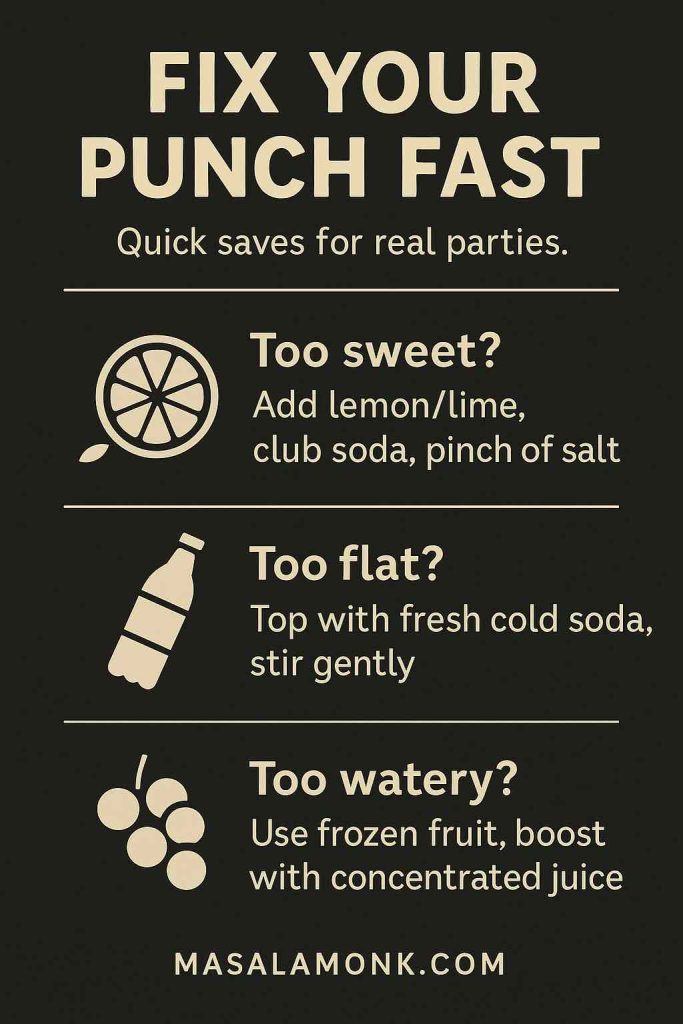
A Better Bowl, Every Time
Make it cold, add the bubbles last, and keep the flavors lively with citrus and just a pinch of salt. Whether you go classic with ginger ale or get a little wild with sherbet or blue curaçao, punch with pineapple juice is a guaranteed mood-setter—and now you’ve got nine ways to serve it like a pro. If you try one, tell us which combo your crowd loved most; we’re always up for testing reader riffs at the next gathering.
FAQs
1) What’s the simplest ratio for punch with pineapple juice?
Start here, then tweak: 4 : 2 : 4 + garnish
- 4 parts pineapple juice
- 2 parts citrus (orange juice or lemonade)
- 4 parts fizz (ginger ale or lemon-lime soda)
Then, add ice + citrus wheels + pineapple chunks. Finally, taste and adjust with a squeeze of lemon (for brightness) or a pinch of salt (to tame sweetness).
2) Ginger ale or Sprite—what’s better in punch with pineapple juice?
It depends on the vibe. Ginger ale is softer and vanilla-ginger sweet, which feels “classic wedding.” Meanwhile, Sprite/7UP is zestier and reads more citrus. If you’re unsure, split the difference: half ginger ale, half lemon-lime soda. For a lighter sip, replace 1–2 cups with club soda.
3) Can I make punch with pineapple juice ahead of time?
Absolutely. First, mix all non-carbonated liquids up to 24 hours ahead and chill them hard. Then, add anything fizzy right before serving. As a result, the bubbles last and the bowl stays bright.
4) How much punch with pineapple juice do I need for my guest count?
Use these quick numbers, then round up:
- If punch is one of several drinks: 3–4 L per 10 guests for 2–3 hours.
- If punch is the star: about 1 gallon (3.8 L) per 10 guests.
- For kids or hot weather, add 10–15%.
Pro tip: make two identical chilled batches; keep one in the fridge so refills stay icy.
5) What if my punch with pineapple juice tastes too sweet (or too tart)?
Firstly, add fresh lemon or lime and stir gently. Secondly, if it’s still too sweet, swap in 1–2 cups club soda for punch and add a tiny pinch of salt. Conversely, if it’s too tart, stir in simple syrup (1:1 sugar to water) a tablespoon at a time.
6) How do I keep punch cold without watering it down?
Go beyond ice cubes. Instead, freeze pineapple rings, grapes, or cranberries and use them as “ice.” For longer events, make a bundt-pan ice ring with pineapple juice and citrus slices; it melts slowly and looks gorgeous.
7) What’s the best “wedding punch with pineapple juice and ginger ale” recipe?
Keep it timeless: 4 cups pineapple juice + 2 cups orange juice + 4 cups ginger ale. Add ice, orange slices, and pineapple chunks. For brighter flavor, substitute lemonade for the OJ; for spicier zip, replace ½ the ginger ale with ginger beer.
8) Which alcohol pairs best with punch with pineapple juice—rum or vodka?
Both work, but they read differently. Rum (especially coconut rum/Malibu) leans tropical and dessert-like; a splash of dark rum adds depth. Vodka keeps things clean and citrusy. For a balanced bowl, start with 1 cup (240 ml) spirit per ~2.7 L base, taste, then decide if you want another ½ cup (120 ml).
9) Can I make a “Planter’s” style punch with pineapple juice?
Yes—think sour : sweet : strong : weak. Try: 1 cup lime (sour) + 2 cups simple syrup (sweet) + 3 cups rum (strong) + 4 cups pineapple juice (weak). Finally, add 1–2 cups water or soda, 6 dashes bitters, and a dusting of nutmeg.
10) How do I do a cranberry holiday punch with pineapple juice?
Go red and refreshing: 3 cups pineapple + 3 cups cranberry + 4 cups ginger ale, plus lime slices and cranberries. For even more color, add ½ cup pomegranate juice. During winter, tuck in cinnamon sticks (pull them before serving).
11) Any tips for sherbet punch with pineapple juice and 7UP?
Yes—work quickly. First, pour pineapple juice, then add 7UP, and finally float scoops of pineapple (or orange) sherbet. Pre-scoop and refreeze for 30 minutes so the “islands” hold. Serve immediately so the fizz doesn’t fade.
12) Can I make blue punch with pineapple juice without blue curaçao?
You can fake the look. Use a blue sports drink in place of curaçao and add a couple drops of orange extract for aroma. Alternatively, go half sports drink, half lemon-lime soda for lighter sweetness.
13) Is fresh pineapple juice better than canned for punch?
Sometimes—but not always. Fresh is zingy yet inconsistent; canned is steady and convenient for crowds. If you juice fresh, taste for sweetness and acidity, then adjust with lemon/lime or a spoon of simple syrup.
14) What’s a good “Sprite and Hawaiian Punch with pineapple juice” combo?
For kid-friendly color, try 2 parts Hawaiian Punch + 1 part pineapple juice + 2 parts lemon-lime soda. Add plenty of ice and orange slices. Then, if it’s too sweet, swap one part of soda for club soda.
15) Can I use lemonade mix (like Country Time) in punch with pineapple juice?
Of course. Whisk the mix with cold water per the label, chill thoroughly, and use it where the recipe calls for lemonade. Because mixes vary in sweetness, start with ¾ strength, taste, and add more if needed.
16) What about champagne or prosecco—can I make a pineapple “bubbly” punch?
Yes, but add the wine last minute. Build a base of pineapple + lemonade (chilled), then gently pour in prosecco right before guests arrive. For balance, keep the ratio near 2 parts juice base : 1 part bubbles.
17) How do I label and serve when some guests want alcohol and others don’t?
Run two bowls side by side—one zero-proof, one spiked—and label clearly. Meanwhile, offer water and a garnish bar (mint, citrus wheels, pineapple spears) so everyone’s glass looks equally festive.
18) Any fast fixes if my punch turns flat or watery mid-party?
If flat, top with fresh, very cold soda and stir minimally. If watery, stir in a small amount of concentrated base (pineapple + citrus) and switch to frozen fruit for chilling. Also, refresh in smaller batches so each top-up stays lively.
19) How far can I stretch punch with pineapple juice for a big crowd?
For a 50-guest event where punch is one of several drinks, plan roughly 12–16 L total. Practically speaking, make four batches of a ~3 L recipe, keep two chilling, and rotate them. If punch is the main drink, aim closer to 19 L (about 5 gallons).
20) What garnishes make punch with pineapple juice look premium—without extra work?
First, build a slow-melt ice ring with pineapple juice and citrus wheels. Next, set out an easy garnish bar: mint, lemon wheels, pineapple chunks, and cocktail cherries. Finally, clap mint leaves between your hands before adding—this releases aroma and feels surprisingly fancy.


